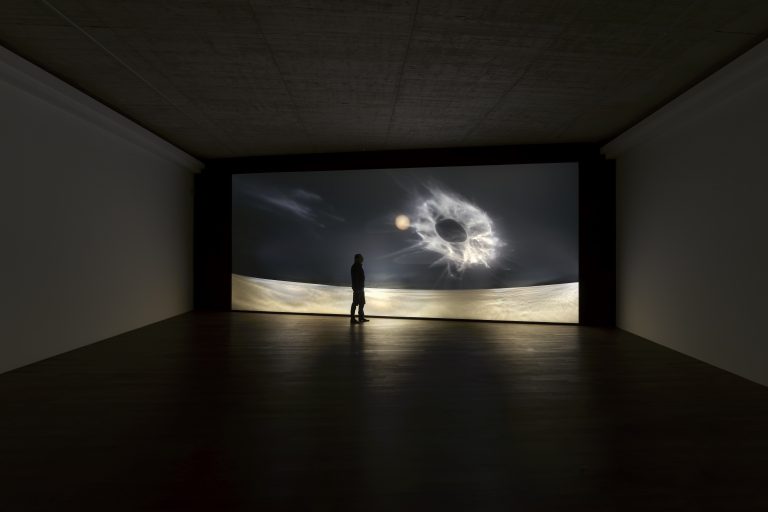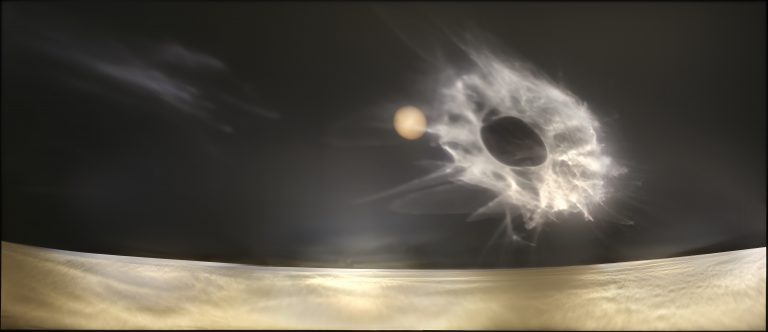Ernst Wilhelm Nay
Painting is simply the most splendid spiritual adventure that I can imagine. You set out again and again, looking to the stars for orientation and not knowing where you are going to – only, somnambulistically, the direction.
Ernst Wilhelm Nay, 1945
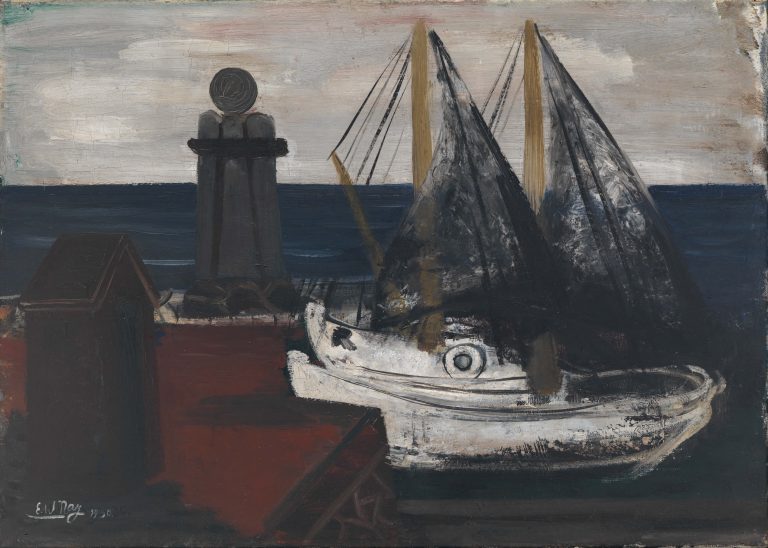
Ernst Wilhelm Nay, Fischerboote in der Hafenmole, 1930. Photo: Lea Gryze
This exhibition shows a cross-section of Ernst Wilhelm Nay’s paintings, from rare, representational paintings of the 1920s to well-known colour-intensive, abstract works of the 1960s. A special feature of this exhibition is the painting Fishing Boats on the Harbour Pier (1930). It was purchased by the Berlin National Gallery in 1931 and confiscated by the National Socialists in 1937.
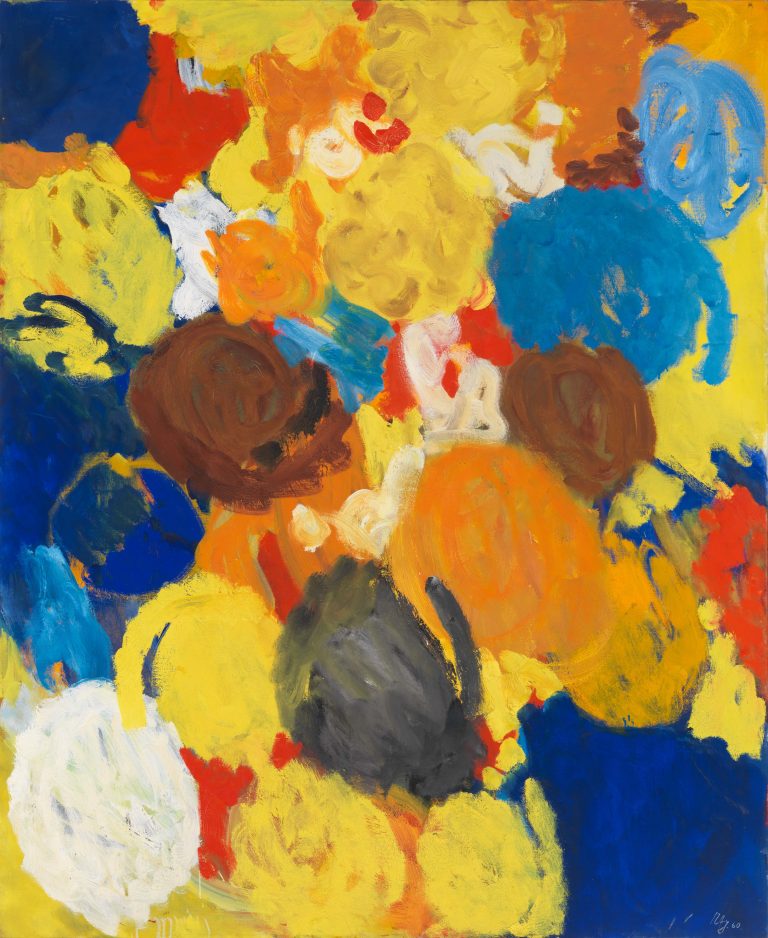
Ernst Wilhelm Nay, Gelb excentrisch, 1960. Photo: Lea Gryze
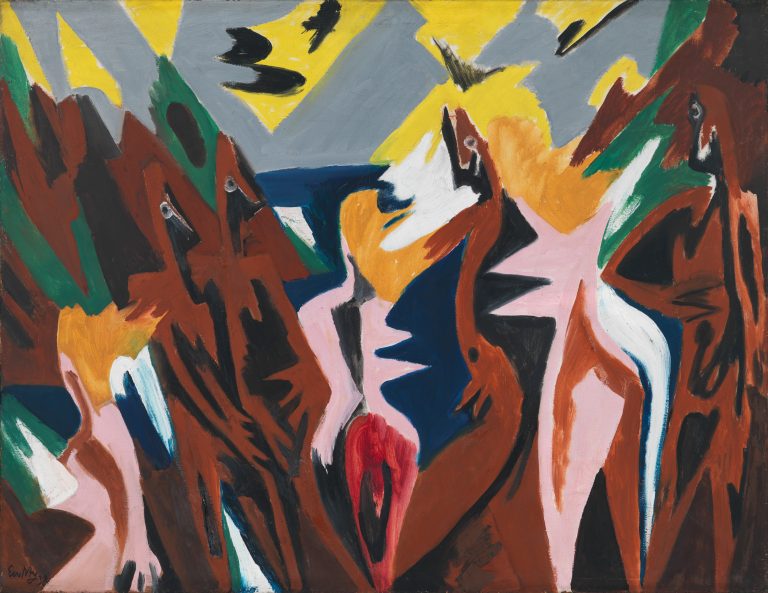
Ernst Wilhelm Nay, Menschen in den Lofoten, 1938. Photo: Lea Gryze
Jakob Mattner
Second Planet
Kunst Lager Haas
Second Planet, a fata morgana being an installation. On a projection foil appears a vibrating, analogue light image. No photograph, no film. A stay between heaven and earth. Menacing and suggestive.
Jakob Mattner
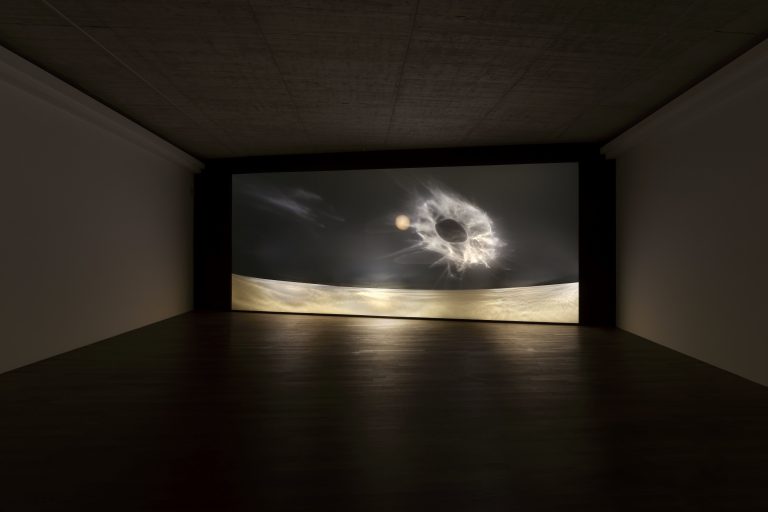
Jakob Mattner, Second Planet, 2021, installation view.
I am a camera.
Jakob Mattner
“I am a camera,” says Jakob Mattner. In his new paper works, ferns, acanthus leaves, round shapes that look like celestial bodies pile up and shine through the black background in green, silver and golden tones. With their vaguely outlined forms and dark colours, the works are reminiscent of photographic negatives. In fact, Mattner has placed plants on the shellac-primed papers and sprayed paint over them, creating these prints. Mattner’s expansive installation Second Planet 2021 also creates imprints, as it were, casting vibrating images of stellar nebulae onto a projection screen.
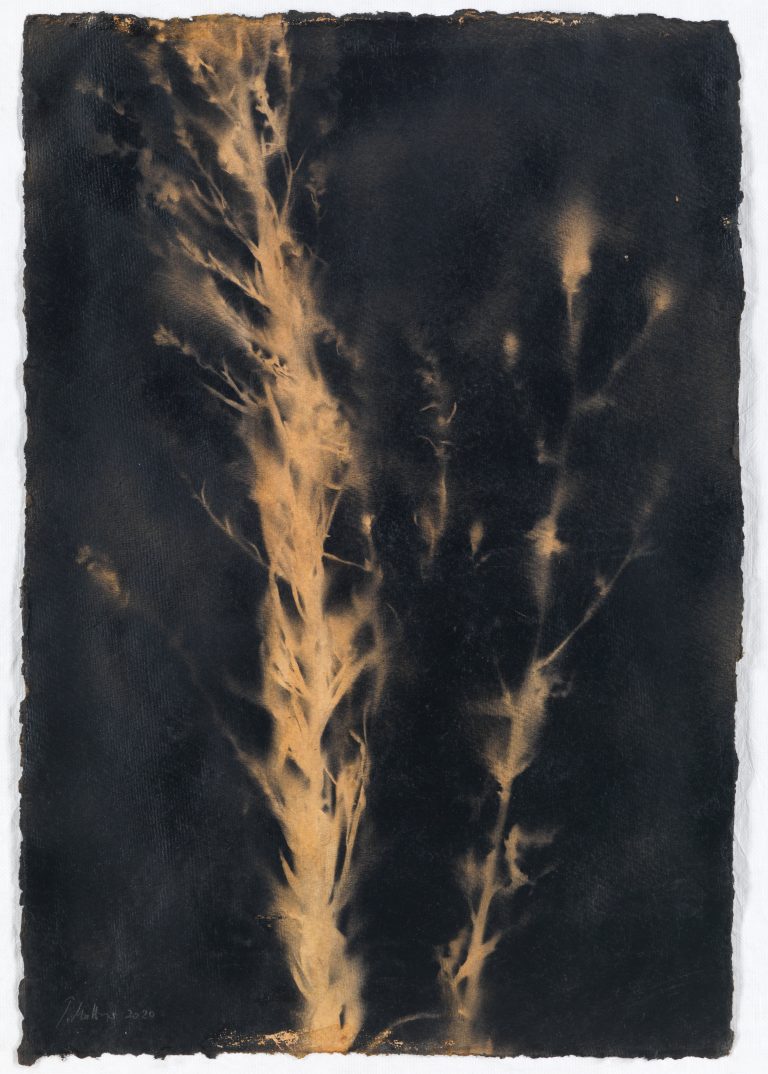
Jakob Mattner, Goldraute, 2020. Photo: Lea Gryze

